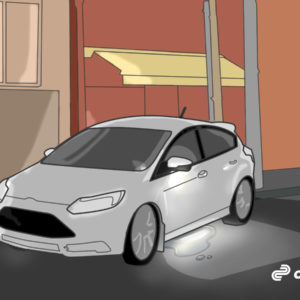Modern vehicles come equipped with different innovative features designed to improve the quality of your ride. One example is the Vehicle Stability Assist or VSA.
VSA is a type of electronic stability control system that Honda and Acura models have. It automatically adjusts engine output and applies the brakes when needed in hazardous conditions, like extreme weather and rough or loose terrain.
The system utilizes sensors to detect when the car is about to skid, improving traction and preventing drivers from losing control of the vehicle.
Is a Stability Control Feature Required by the US Traffic Laws?
The US government has required all vehicles sold since 2012 to have a stability control feature. because of a significant increase in rollover and single-vehicle accidents involving SUVs in the 2000s.
Honda was way ahead of the mandate, integrating VSA into their Honda Accords as early as 1997 in Japan. The first US model to have the tech is the 2000 Acura 3.5RL sedan.
By 2006, VSA became a standard feature for several Honda and Acura models.
Why Is My VSA Light Blinking?
A blinking VSA light on your console is not a cause for concern, as it only means that the system has been activated and working to ensure your safety in hazardous road conditions.
You might notice a few changes once your VSA is activated, like reduced engine power. That’s perfectly normal because the system is selectively applying the brakes to ensure traction and stability.
Common Reasons Why Your Vehicle Stability Light Is On
The vehicle stability light illuminates in inclement weather, on slick roads, and when cornering too quickly, but it can also activate due to a vehicle stability assist problem or maintenance issues that require a diagnosis.
Here are the most common reasons why the VSA light activates:
Malfunctioning ABS Unit
The anti-lock braking system (ABS) prevents your wheels from locking, preventing a crash or skid and maintaining your ride’s stability. Once ABS-related components, like the ABS reluctor ring, ABS wheel speed sensor, wiring harness, and ABS pump motor fail, they can trigger the VSA light. Replacing the faulty component usually solves the issue.

Low Tire Pressure
Tire pressure can affect your car’s stability. An underinflated tire spins at a different speed compared to other tires. This can cause stability issues that can trigger the VSA system. To prevent this from happening, check your tire pressure regularly.
Mismatched Tires
If you install a tire that doesn’t match the size of your other tires, it’ll affect the stability of your ride. That’s because wheels rotate at different speeds, depending on their dimensions. This is especially true for AWD vehicles. If your replacement tires aren’t the same circumference, your powertrain components could get damaged. Ensure compatibility when you replace flat or damaged tires.
Bad Steering Angle Sensor
The steering angle sensor monitors and collects data about the wheel angle and turn rate. If it’s faulty and sends incorrect information to the system, it can significantly affect your ride’s stability. Fortunately, the VSA light usually illuminates to indicate problems in this sensor.
VSA Is Off
The VSA light could be on because the system is off. Once the vehicle’s computer detects that you’ve turned off your ride’s VSA, it’ll activate the light as a reminder of its status.
If you didn’t mean to turn it off, simply tap the VSA button near your steering wheel to reactivate it. Accidental shutdowns are not uncommon due to the button’s location.
Is It Safe to Drive with the VSA Light On?
You can technically drive your ride with the VSA light on If you’ve voluntarily turned off your VSA button However, remember that the VSA safety features wouldn’t work once you turn it off, and you might put you and your passengers’ safety at risk.
If you didn’t intentionally turn off the VSA button, we recommend taking your ride to an auto repair shop for a proper diagnosis. Have faulty components replaced, so you can get back on the road in no time.
Remember that the VSA safety features wouldn’t work once you turn it off, and you might put you and your passengers’ safety at risk.
–Anthony Harlin, ASE Certified Master Automobile Technician
How Do You Turn Off the VSA Light?
You can easily turn off the VSA light by pressing the VSA button on the dashboard until you hear the system beep.
However, it isn’t advisable to turn off this light, especially if there’s an underlying issue that’s causing the light to illuminate. While false alarms can occur, it’s best to double-check for faults and fix or replace bad parts.
How Do You Resolve an Illuminated VSA Light?
You can start by checking if the VSA system is indeed activated. Press the button on your dash to double-check. If the light doesn’t turn off, you can use a scan tool to retrieve the diagnostic trouble code logged on your ride’s computer to pinpoint the cause of the issue. Remember that a VSA light will turn on if there’s an issue in the systems that it controls or monitors.
Any information provided on this Website is for informational purposes only and is not intended to replace consultation with a professional mechanic. The accuracy and timeliness of the information may change from the time of publication.




















